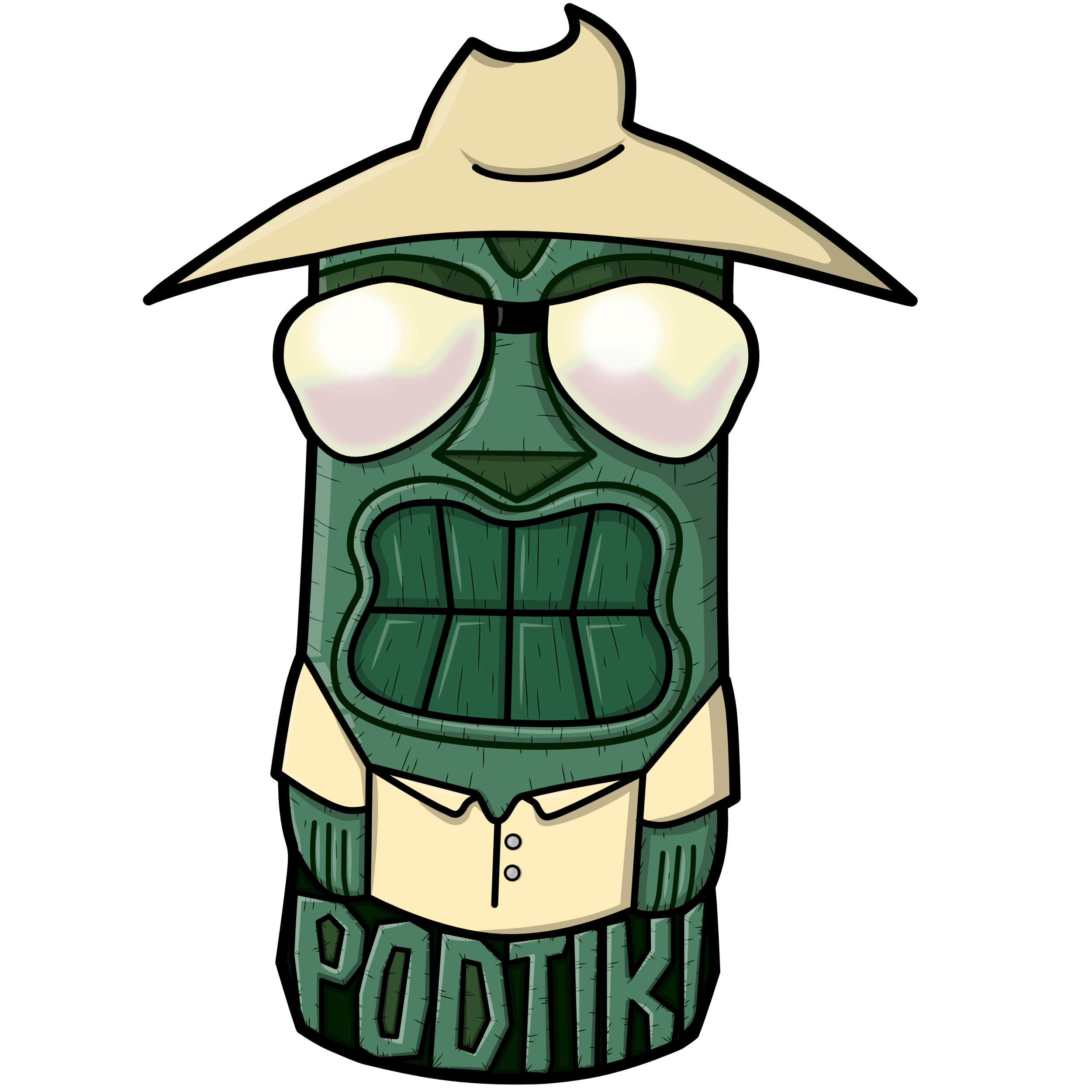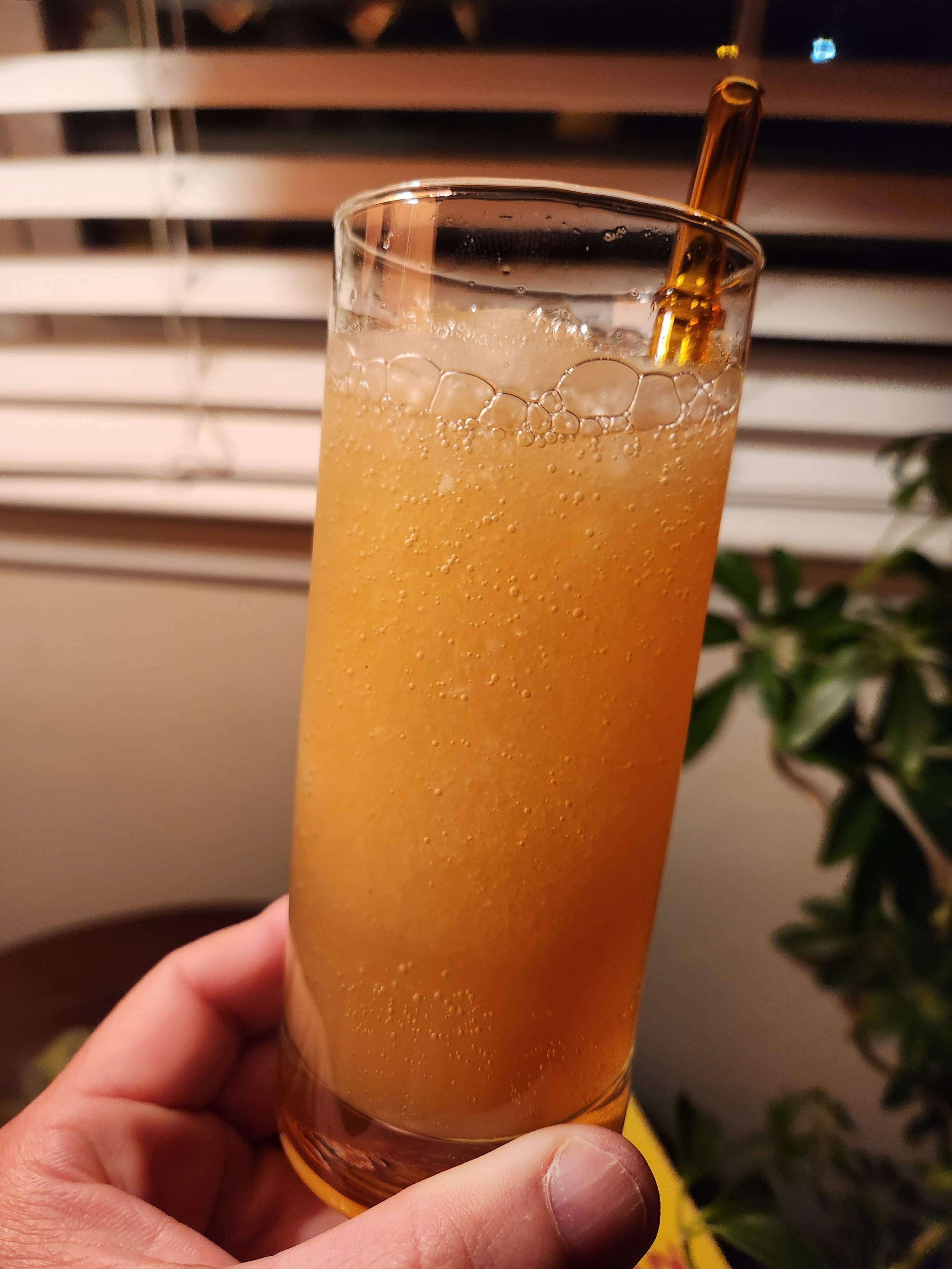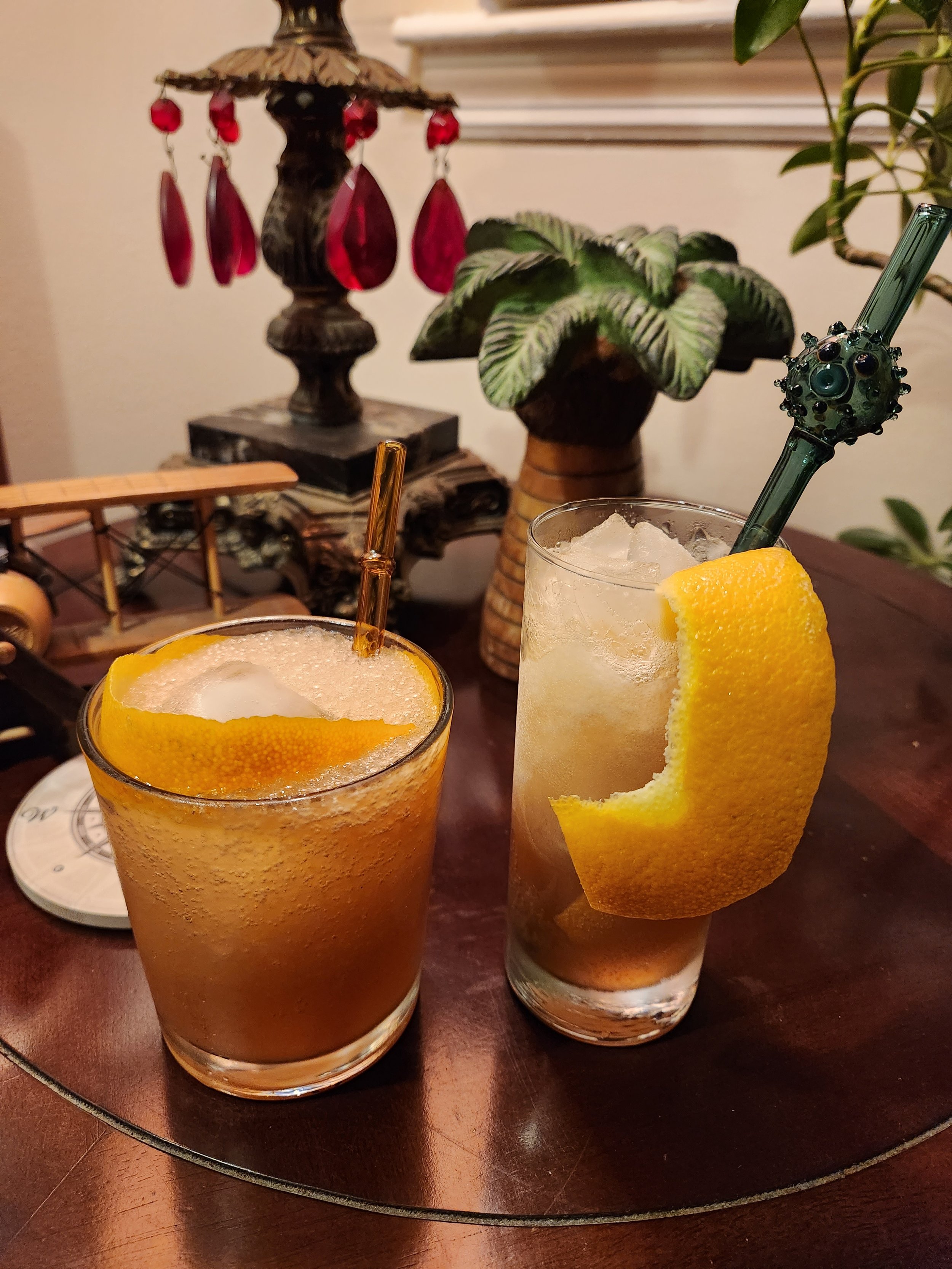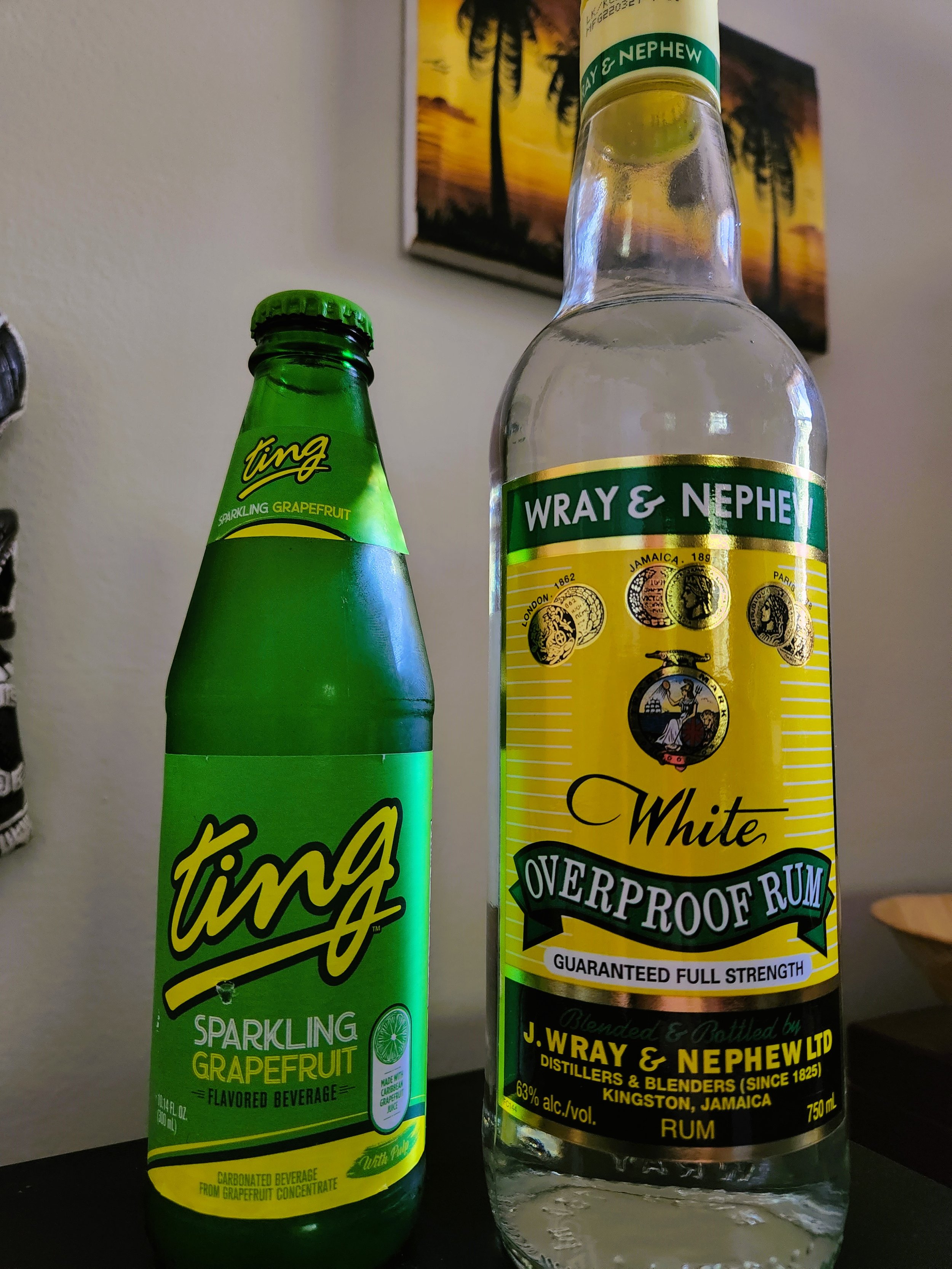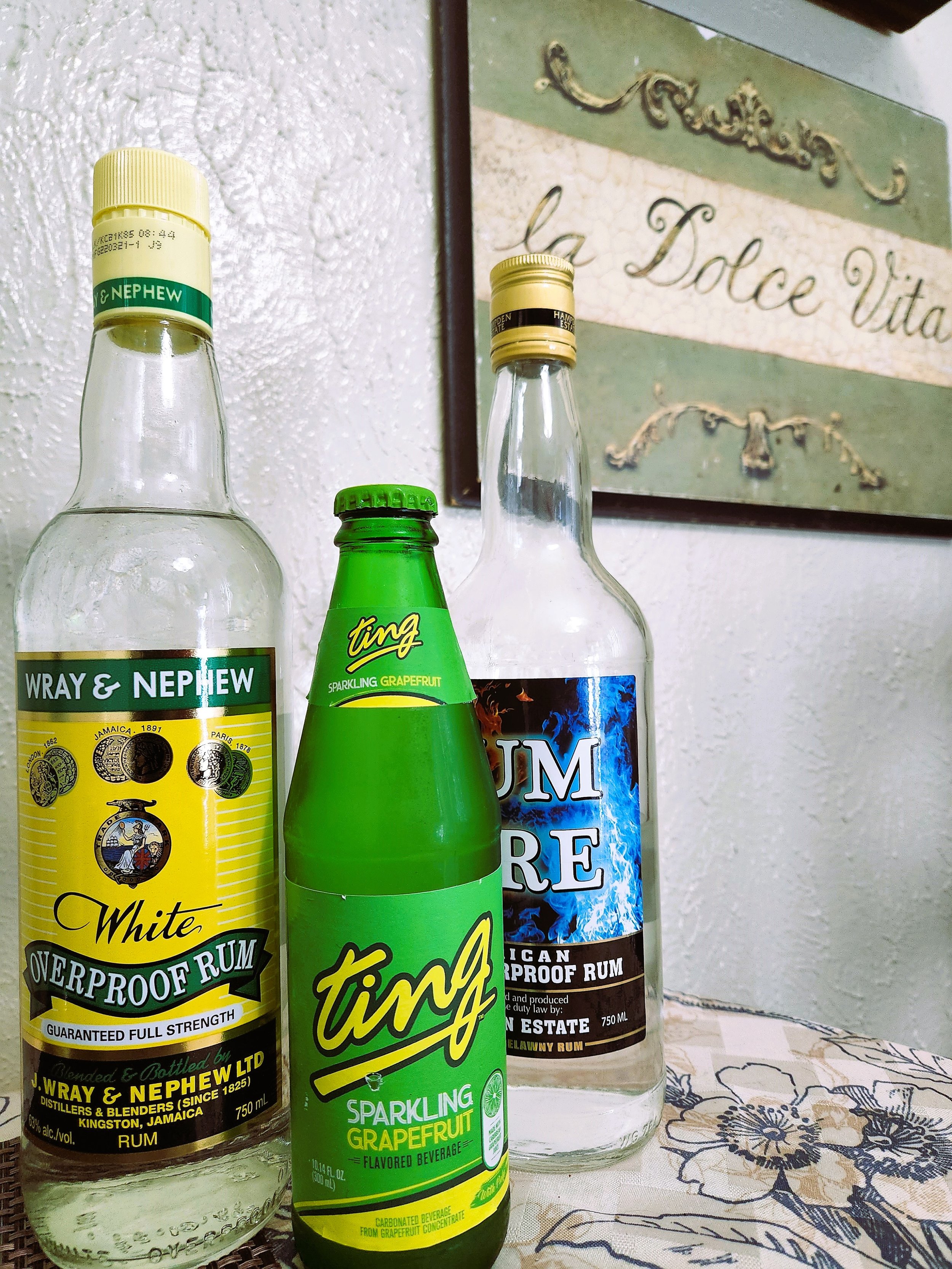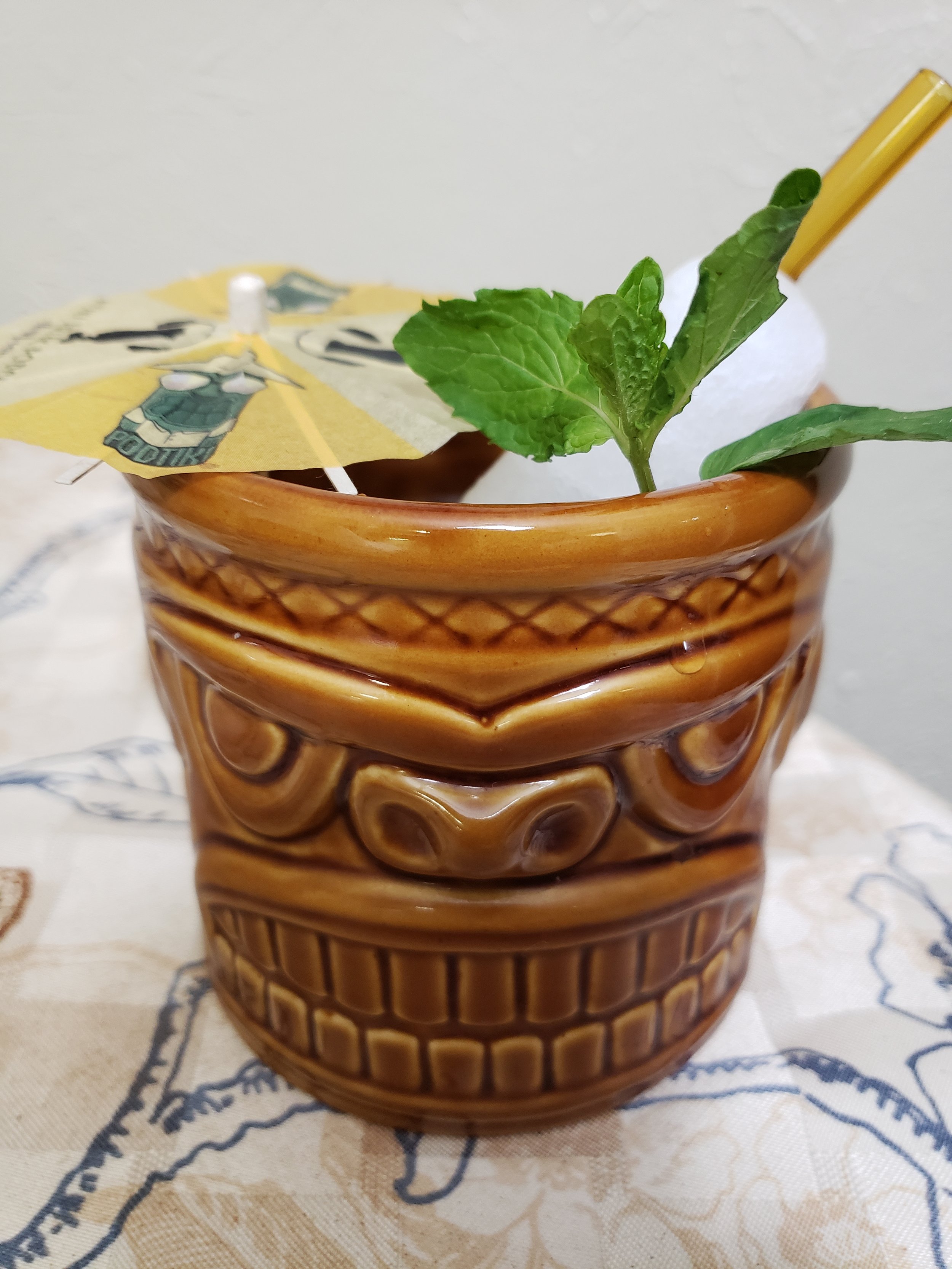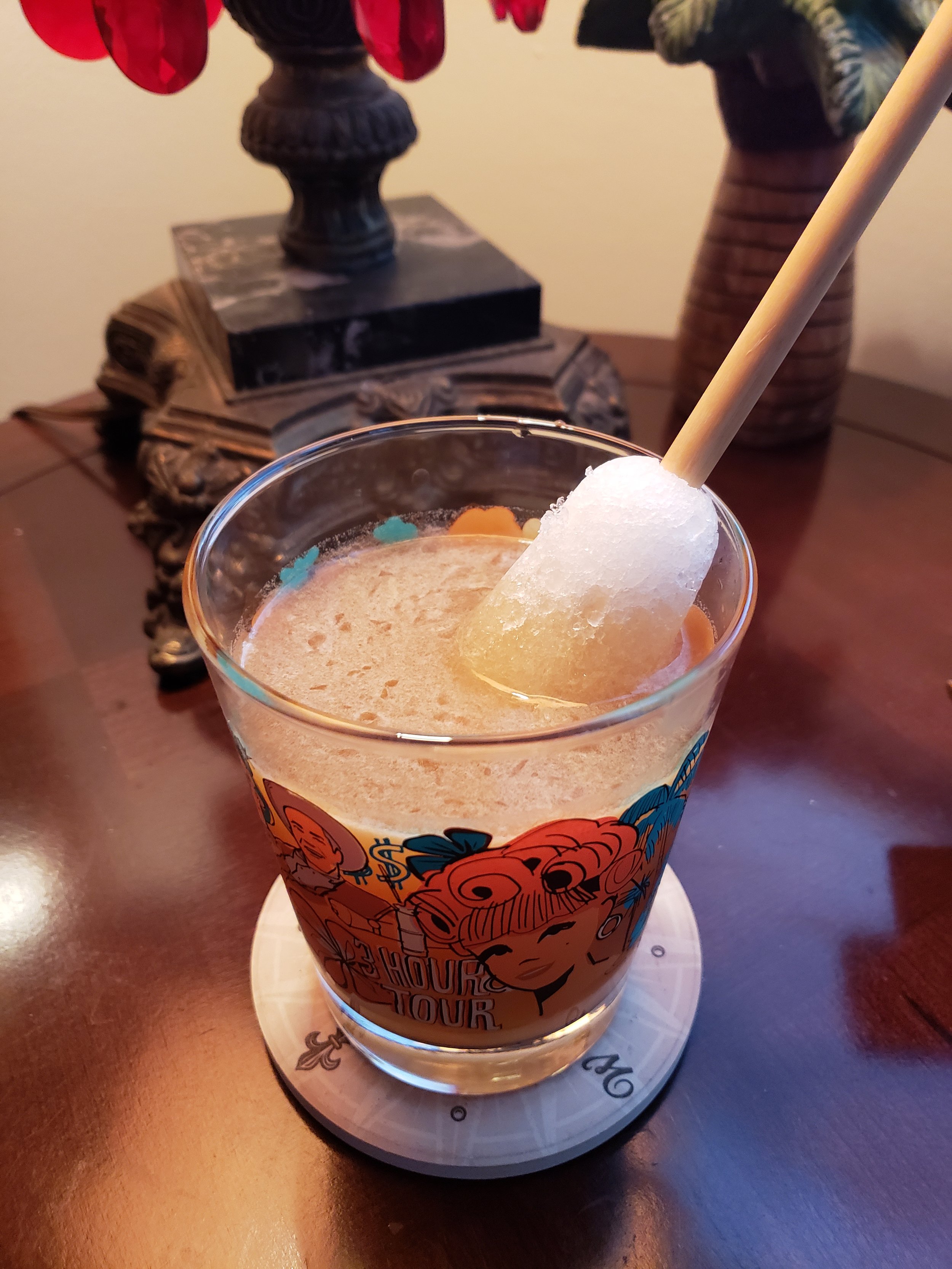Each year I tell myself I’m going to pick a simple drink to feature around the already chaotic holiday season. Each year it seems what I fall on is one of the most complicated cocktails to recreate, and that’s coming from a Tiki guy. This time I’ve not only managed to choose a complicated drink, but one which has multiple accepted versions with difficulty levels ranging from mixing an original Zombie to, well, deciphering the code for an original Zombie.
But loathe am I to let a little mess in the kitchen get in the way of a long winter’s buzz. As I write this on the religious twelfth day of Christmas the holidays are officially behind us and Santa is down island somewhere. I picture him posted up beside the statue of Hemingway at Floridita tossing back Papa Dobles while Cuban children marvel at the sight of a reindeer along Calle Obispo. Unlike Santa, though, we can’t all escape to a tropical paradise to nurse that sugar cookie hangover. Some of us have to deal with the cold gray doldrums of winter.
At the risk of sounding too negative I have to be honest, these are my least favorite months of the year, and not just because of dry January. Here in Nashville January, February, and most of March render an otherwise vibrant cityscape demure and dimmed of character. A black & white veil descends upon our small part, and even the naked desiccated tree limbs seem to reach desperately towards the heavens with obsequiousness. It’s a depressing scene compounded by the return to regular life after a time of celebration. There but for rum, and you my wonderful friends, I may just cocoon myself in the salubrious confines of my apartment and lay dormant till St Patrick’s day.
But alas, it’s in this environment which the necessity for escapism becomes most evident. And what better way to wile away the winter chill than with today's drink. A lulling libation that finds its roots in colonial America, survived prohibition, and landed itself an indelible place in the Tiki oeuvre. Clear a little counter space, stock up on rum, and don that comfy sweater because we’re going into goblin mode this winter sipping on Hot Buttered Rum.
Ladies and gentlemen, my name is Tony and this is Pod Tiki.
⥈⥈⥈
Hot Buttered Rum is a classic seasonal beverage with roots dating to pre-revolutionary America. When cooling air ushered in a time of gathering in dimly lit oaky taverns and necessitated something hearty and rich to stave off both the biting winter and the vicissitudes of colonial life. So, that’s where we’re going to start. In the before-time, predating bourbon and craft beer, when rum reigned supreme as the true American spirit. Born in the West Indies, which should’ve been called the East Americas, it’s only natural that rum would jump the Florida Straits and pervade the New World. Which we know it did as evidenced by documented accounts of our colonial predecessors enjoying a tipple or two. George Washington loved his Jamaican rum, Paul Revere is rumored to have stopped off for a snort along his romanticized ride, and even Benny Franklin published a few sarcastic condemnations of the untoward punch bowl.
If I was a betting man, which I am, I’d lay a few chips down that a lot of the dimly lit back room revolutionary conspiring took place over pewter mugs of rum. That a few iconoclastic scamps can take on one of history’s leading military powers is not a sober thought.
That being said, before 1700 most rum drank in the colonies was imported from the islands. Eventually Rum distilleries began popping up around New England in attempts to reproduce the equatorial elixir at home. Planter’s in the Caribbean saw the opportunity for quo’s to quid pro’d. . You see, down island way grain was in short supply. They needed resources that the colonies had. So, grain went south and molasses came back. The rest is literal history.
Unfortunately, early Americans got a lesson in you get what you pay for. Trying to save a buck by doing it themselves resulted in a much lower quality rum. So much so that New England rum became synonymous with high quantity/low quality. Despite an influx of skilled rum distillers, i.e., freed Caribbean slaves migrating to the colonies, they simply couldn’t escape one unyielding variable - spirits age differently in tropical climes.
It’s true. The British learned this lesson back when they attempted to reproduce Jamaican rum in England. Spirits age twice as fast in the Caribbean. Ever wonder why a 3-5 yr old rum is so good but most Scotch is aged 12 yrs before it’s even bottled? I’m no chemist, but I would assume it has something to do with the way humidity affects the breathing of the barrels. Early American distillers just never could seem to figure it out. That is, until Medford.
Founded in 1630 Medford, Massachusetts is a rivertown situated auspiciously between a natural spring and the shipping port where molasses for the region was unloaded. A “Distiller’s Row” soon sprang up not unlike the Whiskey Row of Kentucky. Some claim the superior quality of Medford rum was due to the natural spring water, but this doesn’t hold up as eventually demand outgrew supply and water had to be brought in from a neighboring village. People were actually drinking more rum than the spring could accommodate.
Wayne Curtis, author of And A Bottle Of Rum: A History of the New World in Ten Cocktails, suggests that by simply raising the standard practices of production even slightly Medford would have automatically risen leaps and bounds ahead of the competition.
At any rate, Medford rum began being asked for by name giving rise to the category of New England Rum as a reputable part of the rum diaspora. It would have been here during this time that Paul Revere may have stopped off for a nip the night of his fateful ride. It’s only an anecdotal rumor but if I was riding horseback on a cold New England night I would certainly need a little something to warm these rattlin’ bones.
I’ve personally adopted some Paul Revere lore into my own life. When it comes to having rum drinks at a beach bar vs on a cruise ship I say one if by land, two if by sea!
⥈⥈⥈
Notwithstanding, we’re still talking about 18th century rum. Distilling and aging technology was not quite where we are now. So, early imbibers still wanted a way to make their demon rum more palatable. One such method was called the Flip.
A Flip was made by filling a large earthenware vessel two-thirds with strong beer along with a sweetener like molasses, sugar, or dried fruit. Then add five ounces of rum. The thing about a Flip is that it wasn’t mixed by stirring or shaking. Enter the loggerhead. This was a three foot long piece of iron with a ball at one end. Think of a medieval mace without the spikes. Originally designed to heat tar, the ball end of the loggerhead would be placed in hot coals till it glowed a fiery red, then quickly plunged into the Flip pot. The beer, rum, and sugar mix would pop and hiss and foam up mixing through emulsion. The drink would then be doled out into individual mugs holding as much as a gallon each! Hey, no judgment here. I mean, what’s a colonist supposed to do? It’s not like they had Disney+. They had to worry about the literal British empire striking back.
Fun aside, after downing their gallon of Flip, surprise-surprise, the occasional tussle would break out. The metal rods used to heat the Flip would become weapons which is where we get the term “coming to loggerheads”.
Flip was the jumping off point, but a tavern’s proprietary rum drink was sort of their way of setting themselves apart and beguiling customers. Not unlike how Don Beach used his secret recipes to ensure against copycats. Accessibility was the name of the game. Anything from berries, spices, mint, and even dairy were added to rum. In fact, a mixture of rum, milk, sugar, and nutmeg was thought of as a refreshing summer drink, known to be good for loose bowels. Sounds a bit like early eggnog.
Wayne Curtis’ chapter on the Flip goes over a litany of fascinating variants. I can’t recommend his book enough for anyone interested in rum and U.S. history.
All this to say, mixing dairy with rum goes back a very long time. Today we’re focusing on one drink that has prevailed and been dutifully Tikified by Don Beach himself. That is, the popular winter warmer Hot Buttered Rum.
⥈⥈⥈
Of course, there’s no actual Hot Buttered Rum recipe from back then. That would’ve been too easy. I mean, sheesh. It’s not like there was anything else noteworthy going in the 1770’s. The earliest written acknowledgment comes in 1860 in Jerry Thomas’ infamous How to Mix Drinks, or The Bon Vivant’s Companion. Here he makes mention of two Hot Rum drinks, a spiced and an unspiced version. Both use a base of Jamaican rum mixed with sugar, butter, and hot water. The former adding nutmeg, allspice, and clove.
Venerable cocktalian David Embury actually rails against the Hot Buttered Rum. He claims, “The lump of butter is the final insult. It blends with the hot rum just about as satisfactorily as warm olive oil blends with champagne!” Obviously not a fan. This sparked a bit of a rivalry with author Kenneth Roberts who favored the drink in his famous book “Northwest Passage.” It’s almost like a good debate is necessary for a drink to go down in history.
It seems the point of contention for Embury was the way the lump of butter never really mixed in quite right and would leave a greasy film and streaks of butter throughout the beverage. Another issue that was solved by the unlikely Don of Tiki himself.
Don the Beachcomber was a problem solver. When honey was too sticky and messy to be used in drinks that had to be made to order quickly he created honey syrup to expedite the process. Here once again we find his rumgenuity at work as by creaming butter with honey he came up with a pre-made batter for his original, totally Tiki, Hot Buttered Rum.
We can’t say if Don invented the batter idea, per say, but for a man known for some of the most convoluted recipes on the planet he actually took something complex and simplified it without losing any of the main flavor components. Like a good author attempts to portray a complicated thought in an easy to understand manner, one could say Don Beach was the Hemingway of cocktails. At times terse and poignant, other times superfluous and daunting. One thing is certain, Don the Beachcomber brought Hot Buttered Rum to the forefront for a new generation of rum drinkers.
Using a batter is the modern preferred method of preparation, but there are myriad versions out there. As I often struggle to find winter/holiday themed drinks I’m virtually certain we will be returning to this well in the future, but today we’re going to focus on the popular Tiki drink created by Don the Beachcomber for the Aku Aku in Las Vegas, when he was hired to consult on the new restaurant headed by a couple of mafiosa. But, that’s a story for a different day.
⥈⥈⥈
To break down the components of Hot Buttered Rum let’s start with the spirit. The Beachcomber recipe according to Jeff Berry in Sippin’ Safari calls for gold Puerto Rico rum. For this I think a wonderful rum that splits the difference between sipper and mixer is Bacardi 8 yr. But, given all the history we just went over I kinda wanted to combine Don’s Tiki version with rum that would have been more akin to what the early settlers would have used. In this I’m going to try two versions. One using a traditional pot stilled Jamaican, Smith & Cross, a favorite style of early Americans, and the second a New England rum, Privateer New England Reserve.
Privateer has exploded on the scene in the last few years and for good reason has quickly become a favorite of aficionados. Their offerings run the gamut of highly sought after high quality rums. The Queen’s share is a personal favorite of mine, but there’s something about the New England reserve that just sits right in my wheelhouse. Plus, coming in at only 45% alcohol it’s their lowest ABV. Which makes it perfect for me seeing as how I like to enjoy multiple per sitting.
Owner Andrew Cabot has a long legacy in New England rum dating back to those early colonists and is plying his family trade now to create some of the best rum not only in the new world, but the whole world. To hear my in depth interview with Andrew and learn all about the history of Privateer check out his Tiki Chat episode in the Pod Tiki archives at podtiki.com. Or click the link in the blog post for this episode.
Next we have our spices. We’ll need a pinch each of grated or powdered nutmeg, clove, and cinnamon, as well as a cinnamon stick - preferably one long enough to stick out of the mug as garnish. If you’re like me your spice cabinet is probably in disarray; full of all different sizes and brands and shapes. Whether it’s those little rectangular tins or plastic bottles, squeezing your fingers in there for a pinch of each is an exercise in civility. Taking a page out of Don Beach’s book I simplified the procedure by mixing together equal parts powdered cinnamon, nutmeg, and clove. Then do 3 pinches of the blended mix rather than a pinch of each 3 spices. Theoretically, it should get you right where you need to be. Just don’t be a heavy pincher.
We’re also going to need 6 ounces of boiling hot water. Please be careful and make sure your vessel of choice is meant to hold hot liquids.
Lastly, the batter. Don used battered creams in a few of his drinks. Famously, the Pearl Diver and Coffee Grog. For Hot Buttered Rum we use the same batter he employed for Coola Culla Don, which he invented around 1939. We’re going to cream equal parts unsalted butter and orange blossom honey. Creaming is simply the method of whipping the ingredients into a frothy batter. In a pinch this can be done by hand with a fork but you’ll need to inject some steroids into your whipping arm to get it perfect. I suggest a cheap hand mixer. Side note, not every standard grocery carries orange blossom honey. I had to order it from Amazon. I try to use that as a last resort, preferring to buy local when possible, but I ran outta time to visit the farmer’s market and I did have an Amazon gift card. Jeff berry instructs us to prepare this a short time before using and leave at room temperature as when cold it becomes a sticky mess. Pro tip, let your butter sit out for a while to soften. This will make a smoother batter.
Well, after all that useless persiflage from yours truly, it’s time to get to the first one of the year. Say it with me. Let’s make a drink!
⥈⥈⥈
First we’ll cover the Hot Buttered Rum according to Don The Beachcomber late of Beachbum Berry.
1 oz Amber Rum
1 heaping tsp Honey Butter
Cinnamon Stick
Pinch of Nutmeg
Pinch of Clove
Pinch of Cinnamon
6 oz Boiling Water
I opted first for the Privateer Rum. The drink was thinner than I expected, though I don’t know why I expected it not to be. No greasy film in the glass which is nice, only a thin frothy skin. The only texture that suggests butter is a slight film coating my tongue. The spices are quite prevalent at first though as it drinks on the rum comes through quite nicely. A nice surprise for such a small amount of spirit comparatively. Honestly, at least with this recipe, I was expecting more from the honey butter batter. Barely any butteriness is present and there’s no sign of honey anywhere. In fact, and I can’t believe I’m saying this, but this recipe would benefit from a bit of sweetener. Perhaps a syrup made with the orange blossom honey to keep the theme.
Otherwise the drink is very redolent of early fall. I get less of a mid-winter vibe and more autumnal orange and browns. Baking spices wafting through the house from the kitchen mixing with background rabble from a football game on TV. Personally, the flavor of Hot Buttered Rum, at least this recipe, fits October through November. Once Santa sleds his fat ass down 34th street I would switch over to eggnog or something more Fezziwig festive.
As far as using Smith & Cross? Same exact notes but with the flavor of Jamaican rum. Which sovereignly adds enough to enhance the drink based on that, but overall it unfortunately remains unremarkable.
Then I went rogue and tried it with a homemade Orange Blossom Honey syrup. That’s 1:1 Honey:Water. Now, I noticed when making the syrup the Orange Blossom Honey, when heated, had an earthy barnyard scent and not the stereotypical sweet richness of clover or wildflower. Perhaps a heavier, richer honey would benefit not only the syrup but add flavor to the batter.
Nonetheless, the addition of honey syrup really balances out all the spice and rum. Wow, what a difference. And I am usually an advocate against added sweetener when avoidable but in this case it’s needed to aid in balance and doesn’t render a saccharine shambles. It actually brings the butter forward making this a very pleasantly warm comforting sipper.
With this addition I find the Jamaican rum to be a point of preference. Mine professedly remains with Privateer or another approachable medium bodied rum.
Therefore, the tentatively official Pod Tiki Hot Buttered Rum Recipe is…
1 oz Amber Rum (Privateer)
1 heaping tsp Honey Butter
3 pinches of 3 spice blend (cinnamon, nutmeg, clove)
6 oz Boiling Water
1 Long Cinnamon Stick
Place everything except hot water into an Irish coffee glass, coffee mug, or Tiki mug that can handle heat. Add hot water and stir till the honey butter and spices are dissolved. Sip slow, while wearing a cardigan, surrounded by loved ones, or at least liked ones, in dim ambient light.
⥈⥈⥈
In conclusion: Before I thought of adding honey syrup I felt the same way about Hot Buttered Rum as I do about crawfish - not worth the effort. But, there is one caveat. I followed the Beachbum Berry recipe from Sippin’ Safari because I trust that Jeff has the most accurate information regarding Don’s original recipes. That being said, his recipe calls for only a “heaping teaspoon” of butter mix, while other trusted sources like liquor.com suggest a tablespoon of their butter batter. Can this discrepancy be the reason the drink lacks body and therefore my lackluster review? Full transparency, normally I would make the drink again so as to pass along the best information I can. But, I am participating in dry January and only allowed myself one day to cheat for this episode's tasting. As I didn’t make this discovery till later, and I don’t want to delay the podcast release, I am going to have to make this drink again and cover it in a few weeks on the next episode of Inside the Mug on the Pod Tiki YouTube channel.
This is kind of what I thought would happen, though. That we would need to keep this drink an ongoing series. So, I’m thinking of Hot Buttered Rum as a moveable feast of sorts, to quote my favorite imbiber. In fact, Hemingway was actually fond of a Hot Rum Punch he was known to drink while in France. He took his with St James Rhum agricole, as was the custom there. Trader Vic and a host of other respected Tiki legends have their own Hot Buttered Rum recipes that we can return to for future winter episodes. It’s the gift that keeps on giving, like the jelly of the month club.
So, even though preparation is kind of a pain in the ass I can definitely understand why these types of drinks were not only favorites of our forebears, but have stood the test of time.
As evidenced by how rum’s popularity began to wane as European trade resummed and finer spirits came available, but the nail in the coffin came from the powers that be. Why are they always messing up our good time? When those powers found themselves being with excess grain a multitude of new whiskey distilleries popped up across the young country and thus Bourbon became the American spirit. Blah, blah, blah.
Fortunately, rum and rum drinks have once again found their way into the hearts and livers of our culture. For as long as our fragile planet continues to spin away from the sun the time will come to huddle up under blankets beside a fire, or on the sofa with the fireplace on Netflix, or even on a sandy moonlit beach behind a cool ocean breeze, there will always be a need for those transcendent hiemal flavors that whisk us away to a place of safety and solace. And rum. There will always be a need for rum, too.
Ladies and gentlemen, my name is Tony, and this has been Pod Tiki.
Sources: Jeff Berry - Sippin’ Safari, Wayne Curtis - And a bottle of Rum, Philip Greene - To Have and Have Another, liquor.com, Wikipedia, vintageamericancocktails.com

